Please Note: Firefox and some other search engines are
not suitable - Use “Internet
Explorer” for this page to load
perfectly!
Click the logo above
to reach the ssMaritime FrontPage for News Updates & “Ship of the
Month”
With Reuben
Goossens
Maritime Historian,
Cruise‘n’Ship Reviewer, Author & Maritime Lecturer
Please Note: All ssMaritime and other related maritime/cruise
sites are 100% non-commercial and privately owned. Be assured that I am NOT
associated with any shipping or cruise companies or any travel/cruise agencies
or any other organisations! Although the author has been in the passenger
shipping industry since 1960, although is now retired but having completed
around 680 Classic Liners and Cargo-Passengers Ships
features I trust these will continue to provide classic ship enthusiasts
the information the are seeking, but above all a great deal of pleasure!
 -
-

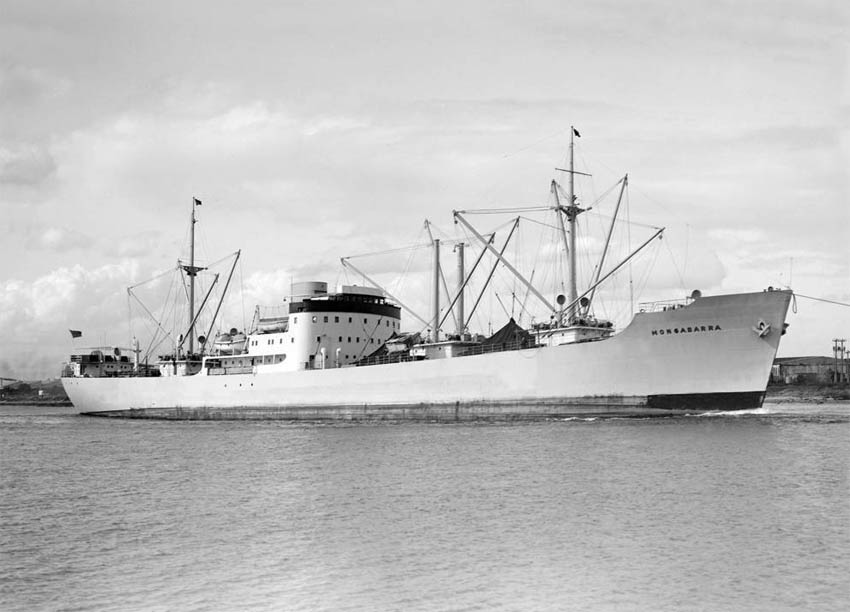
Photographer is
unknown – Please see the photo notes at the bottom of the page
A new
passenger-cargo liner was ordered to be built by the Swedish “Eriksbergs
Mekaniska Verkstad” at G?teborg
For interest,
the name “Mongabarra” comes from an Australian Aboriginal word that
translates as “Pigeon.”
The MS
Mongabarra offered excellent accommodations for 12 passengers, in cabins as
follows; 3 Twin bedded cabins, 2 Two-berth cabins and 2 Single bed cabins.
However the Two-berth cabins did have a Sofa and these could convert into a
third bed, making the total passenger capacity 14.
Passengers
could certainly enjoy the delightful intimate facilities of this small ship as
she sailed the globe, for she had a well appointed and comfortable Lounge and
Dinning Room, in addition there was ample Deck space including the Veranda
located aft.
At first she
operated on the Trans-Atlantic service departing from various European ports,
but she later ventured further afield to the West Coast of America and it is
recorded that she also called into ports of Australia as well as occasionally
to New Zealand during the 1950s.
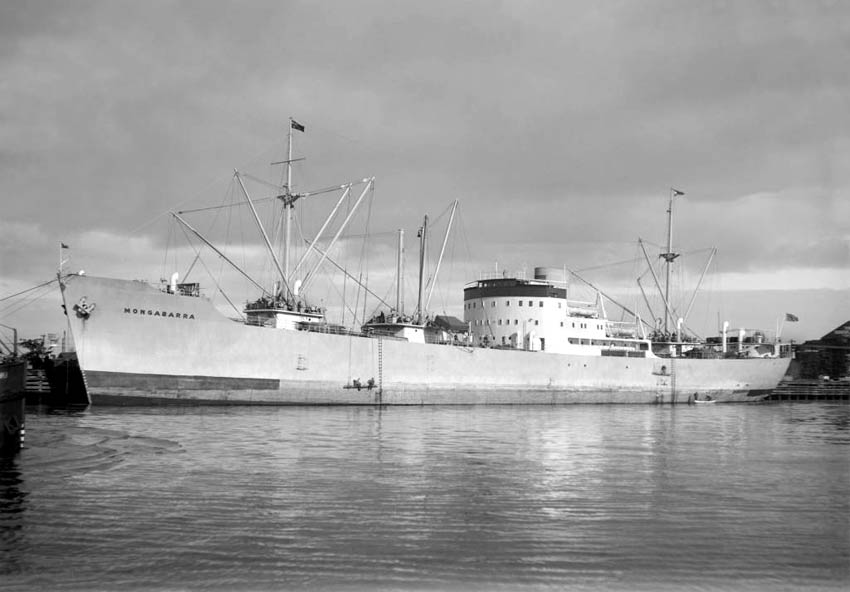
Photographer is
unknown – Please see the photo notes at the bottom of the page
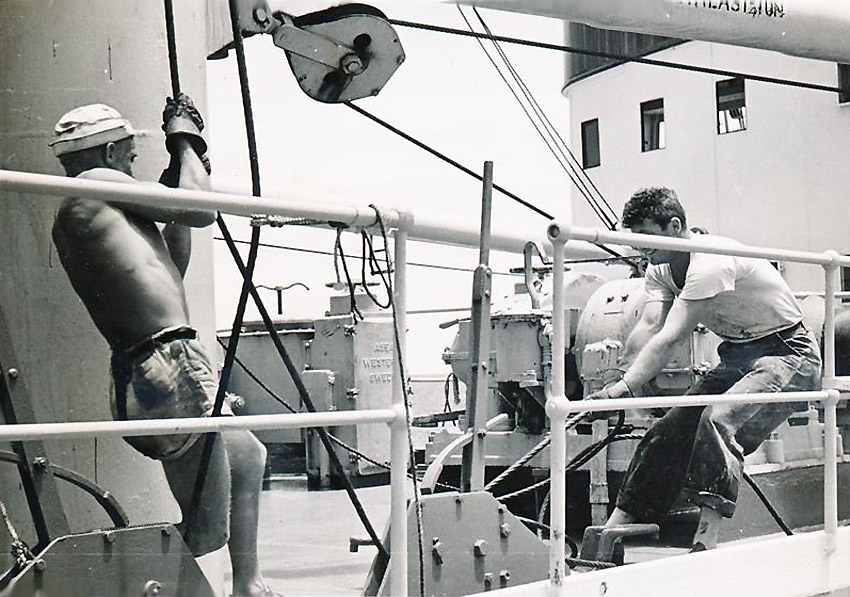
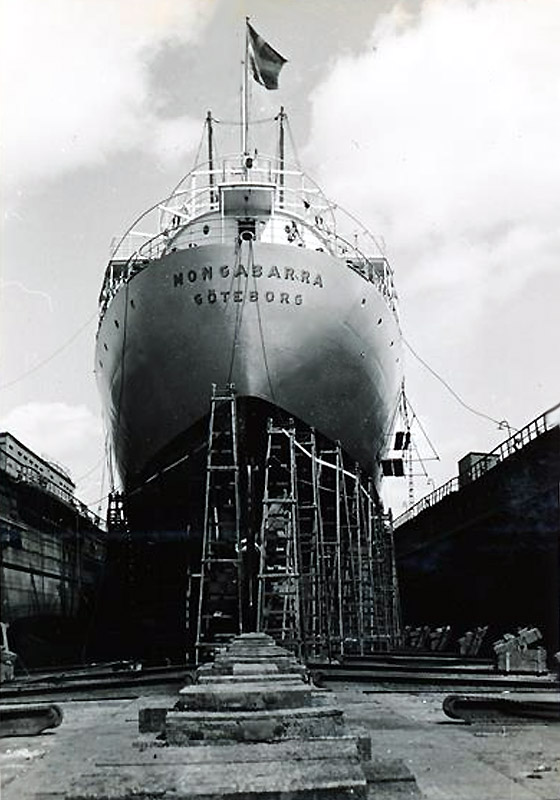
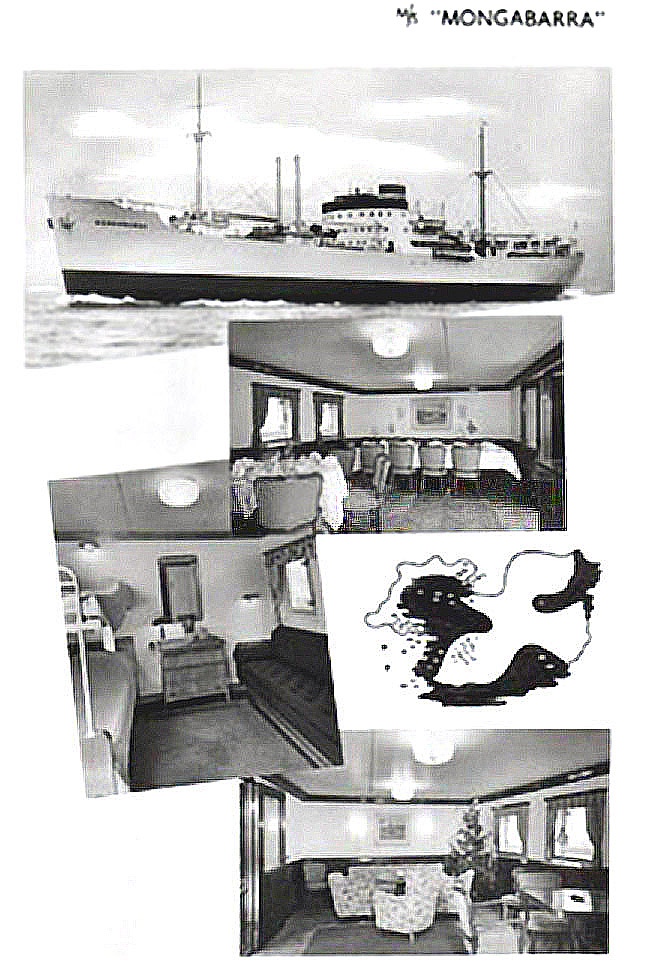
1.
The ship, 2. The Dining Room, 3. A two berth Cabin with a convertible sofa to a
single bed
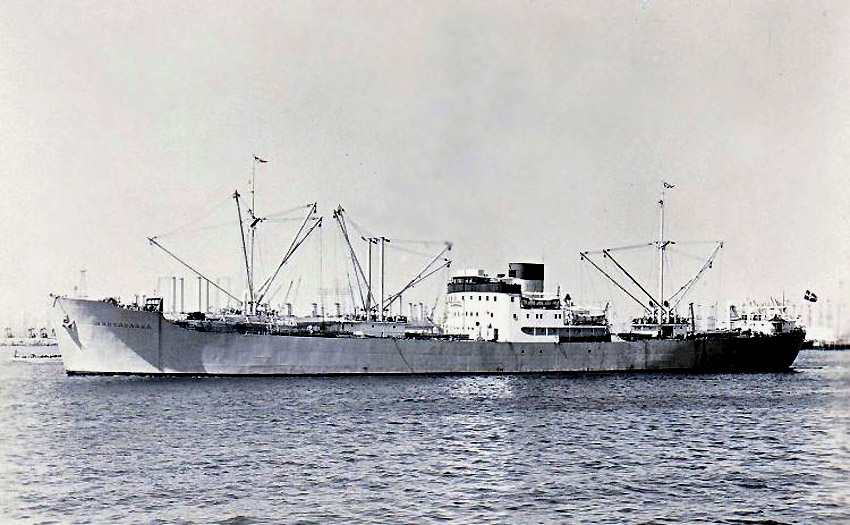
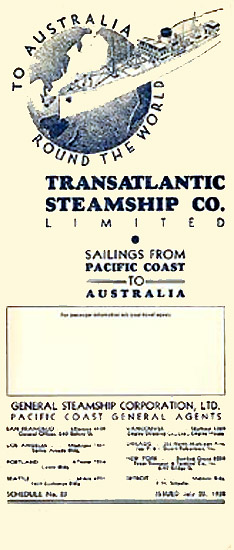
**********************************
New Zealand
In May/June
1953 the MS Mongabarra made her maiden visit to
The
Northern Advocate – printed the day before departure
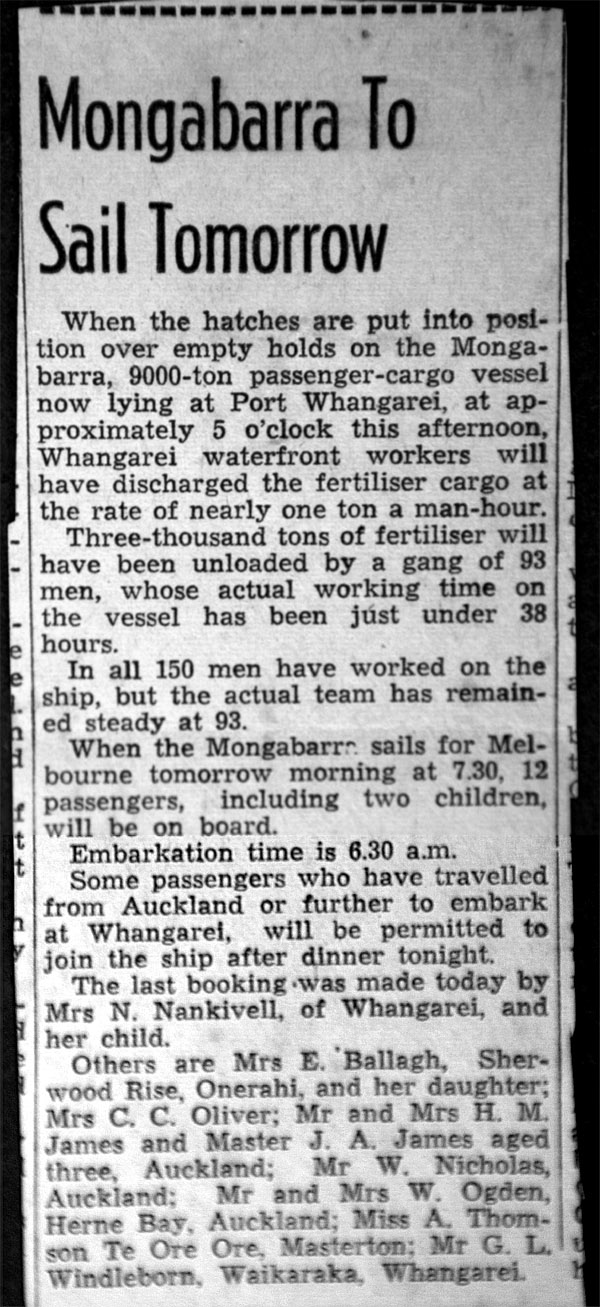
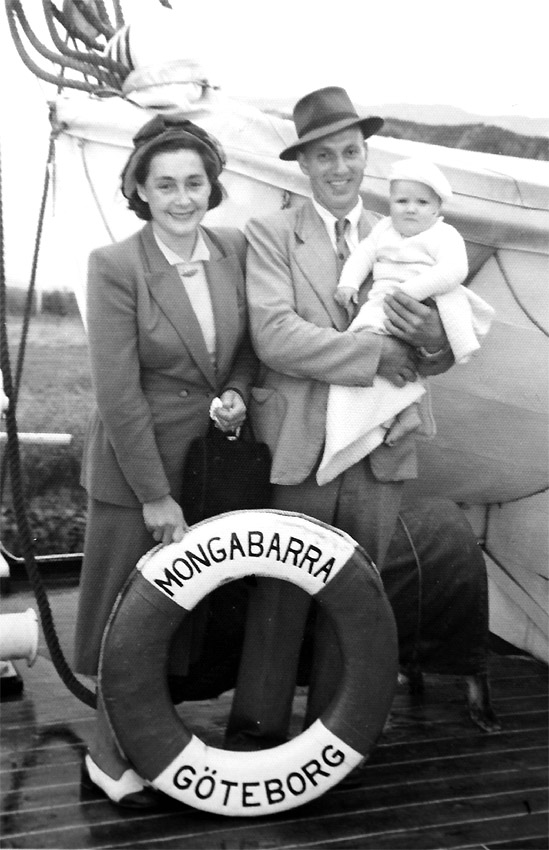
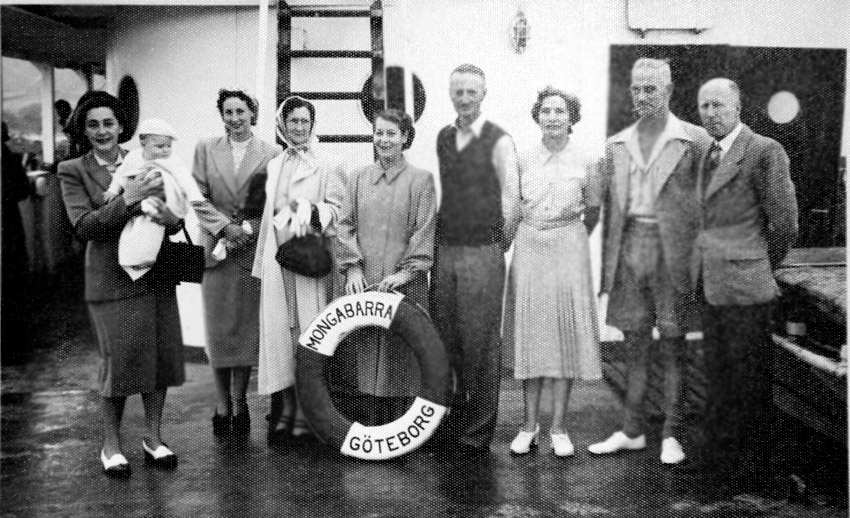
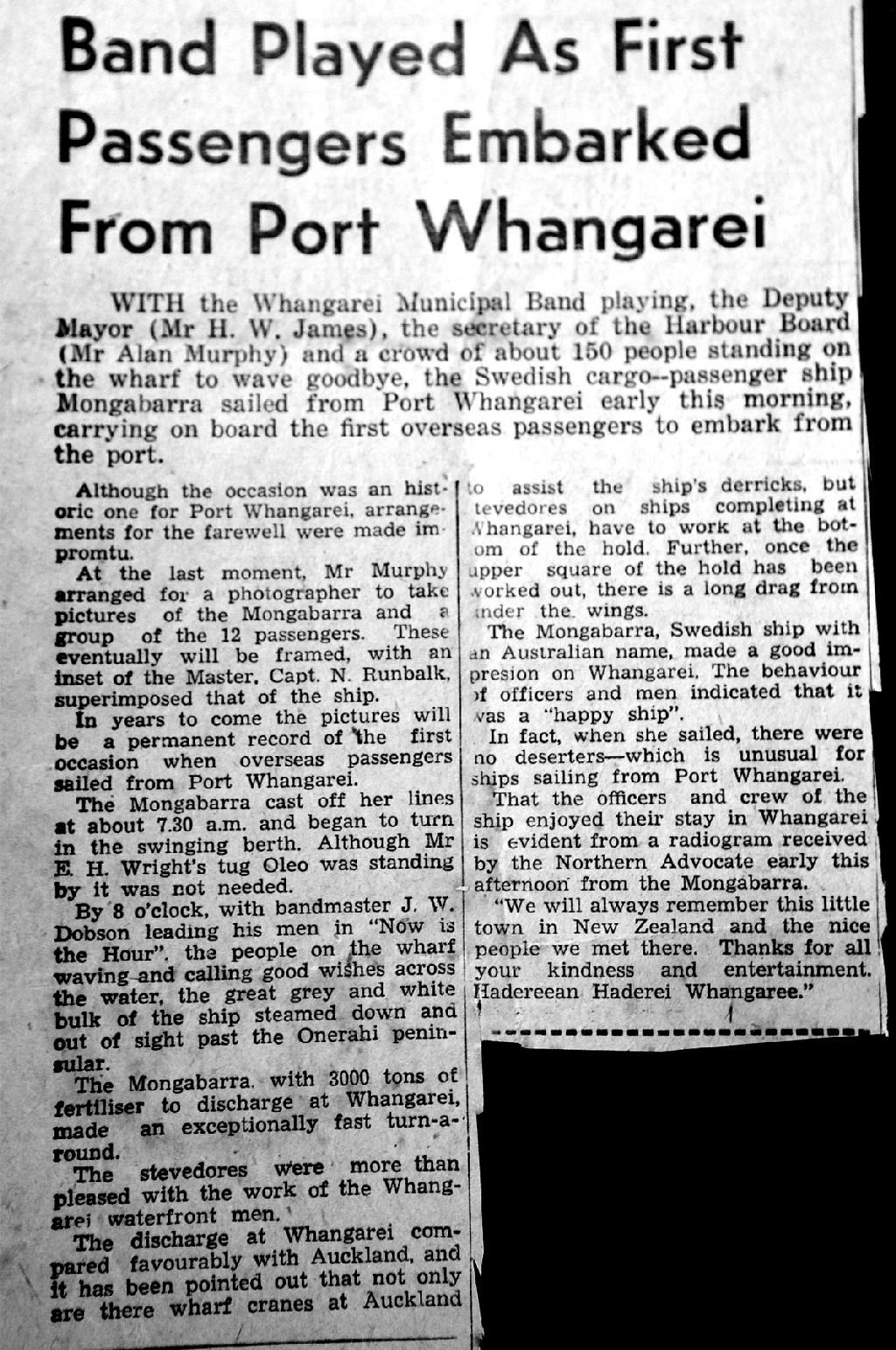
MS Mongabarra Sad End:
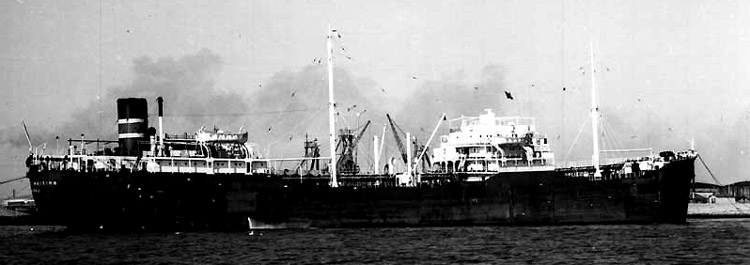
The
BP tanker MS British Workman
The British Workman was on her way to
Soon the 485-ton Dutch vessel Wegro was on the scene and she took on
survivors from both the tanker and lifeboat with 16 persons from the
Mongabarra, including some women who were obviously very upset. A little later,
another one of the Mongabarra lifeboats reached another small vessel, the
Nicola with 17 persons. From what the captain said later, “when the fog
lifted, at least eight vessels were around my ship, all desiring to salvage
her, but I remained on board, thus they were unable!”
Considering that she had been badly damaged her owners did make an
attempt to have her towed away, thus two Dutch salvage tugs, the Stentor and
Samson both carrying additional pumps where sent to the Mongabarra. They
arrived in the evening of May 20 and noticed that her she was still visible,
but part of the ship was well under water. In the morning they first had to try
to free her, as she was stuck in the mud below as well as being full of water.
But their attempts failed, they used explosions to break her into two allowing
the Mongabarra to sink, which she did on May 22, 1960.? A sad end indeed, although scuba divers love
to visit her on a regular basis to this day!
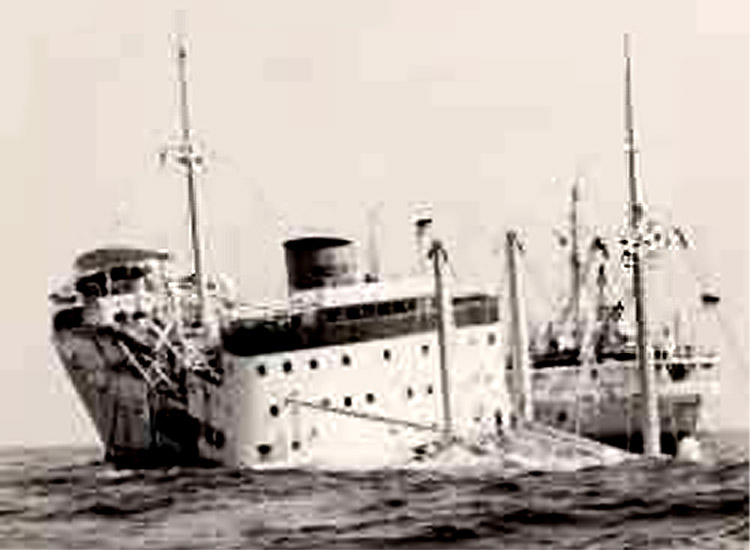
The
last day afloat for the MS Mongabarra, May 22, 1960 for she is about to go down
to the bottom!
Specifications:
Power:………………………………………..5400
BHP.
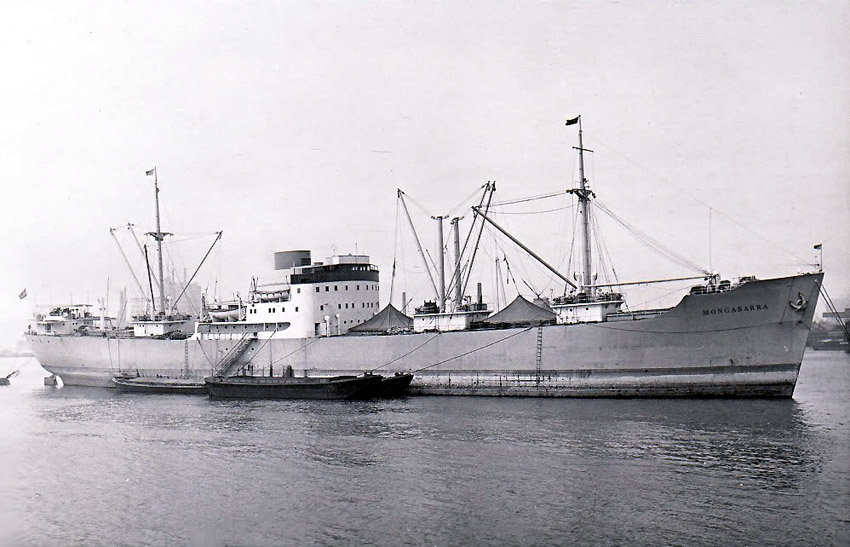
“Blue Water
Liners sailing to the distant shores.
I watched them come, I watched them go and I watched them die.”
****************************
Visit our ssMaritime Main INDEX
Where you will discover around 680 Classic Passenger
& Passenger-Cargo Liners!
ssMaritime.com & ssMaritime.net
Where the ships of the past make history & the 1914 built MV
Doulos Story
Please Note: ssmaritime and associated sites are 100% non-commercial and the author
does not seek funding or favours and never have and never will.
Photographs on ssmaritime and associate
pages are either by the author or from the author’s private collection.
In addition there are some images and photographs that have been provided by
Shipping Companies or private photographers or collectors. Credit is given to
all contributors, however, there are some photographs provided to me without
details regarding the photographer or owner concerned. Therefore, I hereby
invite if owners of these images would be so kind to make them-selves known to
me (my email address can be found at the bottom of the page on www.ssmaritime.com),
in order that due credit may be given.
????? ssMaritime
is owned & ? Copyright by Reuben Goossens - All Rights Reserved?????????????????????????????????????????????????????????????????????????????????????????????????????????????????????????????????????????????
